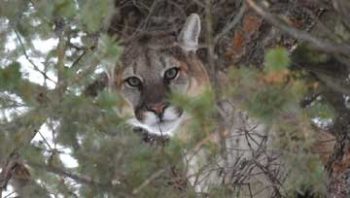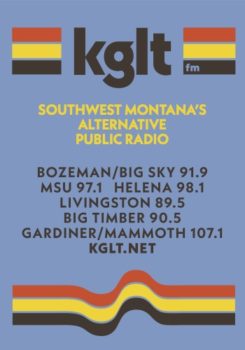Mountain lion encounter prompts reminder for wildlife safety tips
 From Montana Fish, Wildlife & Parks (FWP)
From Montana Fish, Wildlife & Parks (FWP)
A brief encounter involving a mountain biker and a family group of mountain lions on a forested trail system north of Whitefish highlights the need to be aware of possible wildlife encounters in the outdoors and to follow safety precautions.
On the afternoon of June 28th, an adult male riding a mountain bike reported encountering a group of 3-4 mountain lions on the Whitefish Trail system near Haskill Lake. The biker said the lions briefly followed him down the trail before losing sight of them. The lions did not make physical contact with the biker at any time. Based on the description of the encounter, it does not appear that the lions displayed predatory behavior. FWP determined that no management action is needed.
“Trail users are advised to be aware of possible encounters with wildlife and review our recommended safety tips for avoiding conflicts,” said Chad White, FWP Region 1 bear and lion technician.
Most wildlife, including bears and mountain lions, will try to avoid a confrontation. Recreationists should give wildlife at least 100 yards of space. Mountain lions and bears are most active at dusk and dawn when their prey is active, but they do travel at any time of the day or night.
FWP offers some tips on how to prevent encounters with lions or how to react if you see one:
What to Do If You Encounter a Mountain Lion
– Do Not Approach a Lion: Most mountain lions will try to avoid a confrontation. Give them a way to escape.
– Do Not Run from a Lion: Running may stimulate a mountain lion’s instinct to chase. Instead, stand and face the animal. Do not turn your back. Make eye contact. If there are small children nearby, pick them up if possible so they don’t panic and run. Although it may be awkward, pick them up without bending over or turning away from the mountain lion.
– Do Not Crouch Down or Bend Over: A person squatting or bending over looks a lot like a 4-legged prey animal. When in mountain lion country, avoid squatting, crouching or bending over, even when picking up children.
– Appear Larger: Raise your arms. Open your jacket if you are wearing one. Again, pick up small children. Throw stones, branches, or whatever you can reach without crouching or turning your back. Wave your arms slowly and speak firmly in a loud voice. The idea is to convince the mountain lion that you are not prey and that you may be a danger to it.
– Be Vocal: Talk calmly and regularly.
– Teach Others How to Behave: One who starts running could initiate an attack.
What to Do If You Encounter a Bear
– Cary Bear Spray: Make certain you have bear spray at the ready and know how to use it. If a grizzly bear charges your first option is to remain standing and direct your spray at the charging bear. The bear may “bluff charge” or run past you.
– Never Approach: Slowly back away, if possible. Do not run from a bear. Keep a distance of at least 100 yards.
– Stay calm: Don’t panic and run. Behave in a non-threatening manner. Do not attempt to frighten away or haze a grizzly bear that is near or feeding on a carcass.
– Stay Together as a Group: Immediately pick up small children.
– Be Vocal: Speak softly. Do not make eye contact.
For more information about staying safe around wildlife, visit fwp.mt.gov. To report wildlife conflicts, contact your FWP Region Headquarters.
Montana Fish, Wildlife & Parks, through its employees and citizen commission, provides for the stewardship of the fish, wildlife, parks, and recreational resources of Montana, while contributing to the quality of life for present and future generations. •
Eco H






